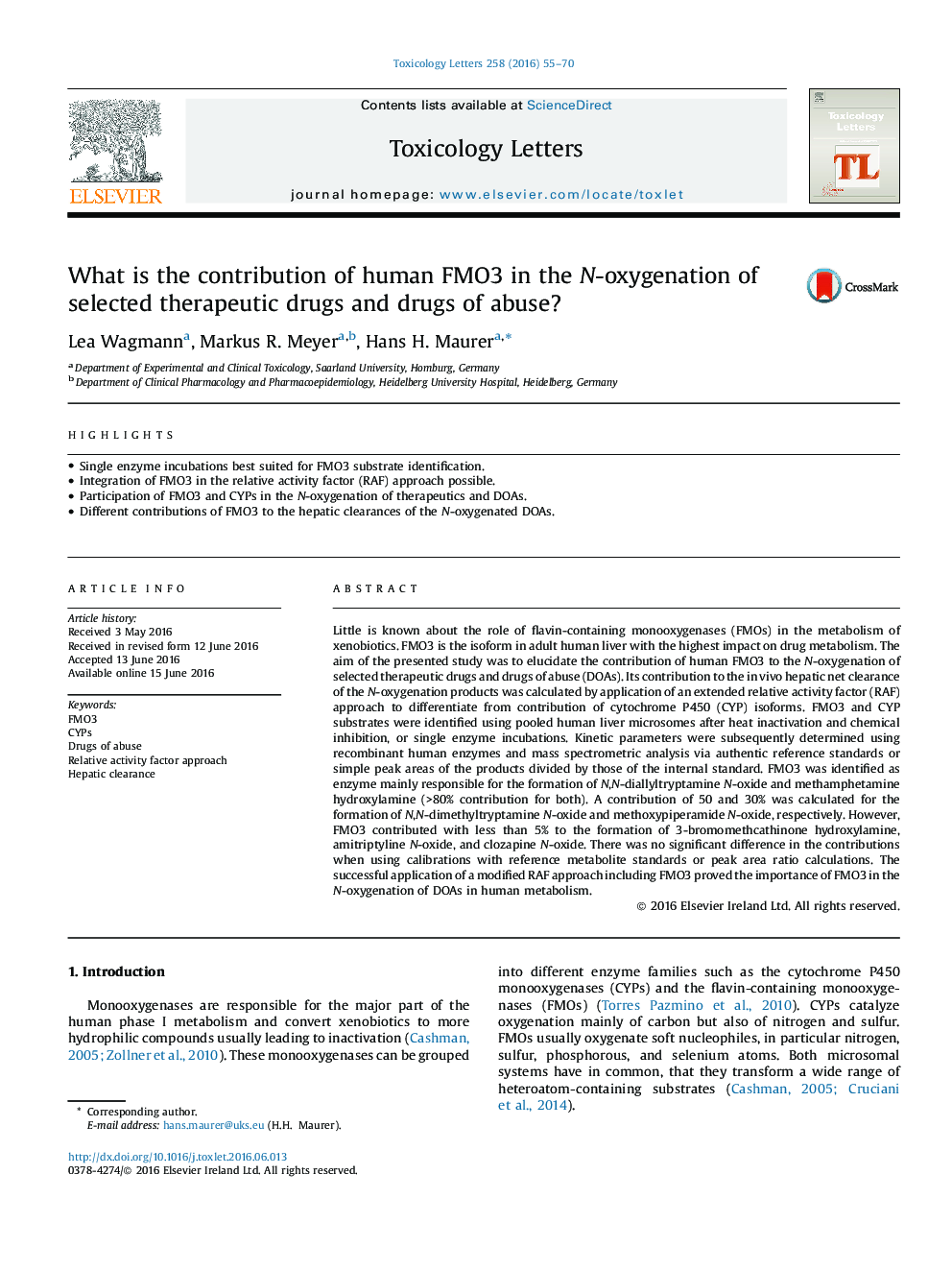| Article ID | Journal | Published Year | Pages | File Type |
|---|---|---|---|---|
| 5859722 | Toxicology Letters | 2016 | 16 Pages |
â¢Single enzyme incubations best suited for FMO3 substrate identification.â¢Integration of FMO3 in the relative activity factor (RAF) approach possible.â¢Participation of FMO3 and CYPs in the N-oxygenation of therapeutics and DOAs.â¢Different contributions of FMO3 to the hepatic clearances of the N-oxygenated DOAs.
Little is known about the role of flavin-containing monooxygenases (FMOs) in the metabolism of xenobiotics. FMO3 is the isoform in adult human liver with the highest impact on drug metabolism. The aim of the presented study was to elucidate the contribution of human FMO3 to the N-oxygenation of selected therapeutic drugs and drugs of abuse (DOAs). Its contribution to the in vivo hepatic net clearance of the N-oxygenation products was calculated by application of an extended relative activity factor (RAF) approach to differentiate from contribution of cytochrome P450 (CYP) isoforms. FMO3 and CYP substrates were identified using pooled human liver microsomes after heat inactivation and chemical inhibition, or single enzyme incubations. Kinetic parameters were subsequently determined using recombinant human enzymes and mass spectrometric analysis via authentic reference standards or simple peak areas of the products divided by those of the internal standard. FMO3 was identified as enzyme mainly responsible for the formation of N,N-diallyltryptamine N-oxide and methamphetamine hydroxylamine (>80% contribution for both). A contribution of 50 and 30% was calculated for the formation of N,N-dimethyltryptamine N-oxide and methoxypiperamide N-oxide, respectively. However, FMO3 contributed with less than 5% to the formation of 3-bromomethcathinone hydroxylamine, amitriptyline N-oxide, and clozapine N-oxide. There was no significant difference in the contributions when using calibrations with reference metabolite standards or peak area ratio calculations. The successful application of a modified RAF approach including FMO3 proved the importance of FMO3 in the N-oxygenation of DOAs in human metabolism.
